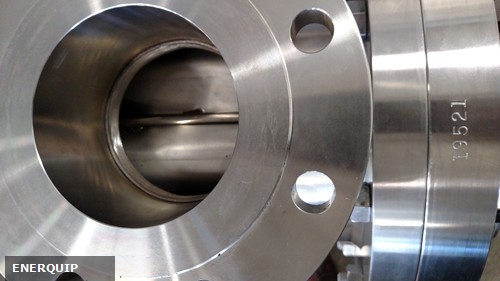A shell and tube heat exchanger is an essential part of production for many operations. These machines are built to last for years. However, some processes can be rough on the exchanger. For instance, high fluid flows can cause corrosion and vibration, which can be detrimental to the machine. Too much vibration can cause tubes to pull out and cause cross-contamination or shell or tube damage.
The Tubular Exchanger Manufacturers Association states that, in some high-velocity situations, an impingement plate is required. This is when single-phase fluids that are non-abrasive reach a dynamic pressure, or v2, of greater than 1,500. However, with other high values, TEMA recommends devices to protect the exchanger from erosion and vibration.
But installing these plates has some drawbacks. Process Heating pointed out that installing an impingement plate will increase the shell diameter because the plate is typically welded to the tube bundle, beneath the inlet nozzle. University of Kentucky professors R.K. Shah and D.R. Sekulic stated that when impingement methods like these are used, part of the opening will be blocked. Hydrocarbon Processing said these devices could also cause additional vibration problems of their own. This is why it is imperative that manufacturers thoroughly understand the problem at hand, the possible consequences of altering the exchanger and what the overall benefit will be.
Testing before investing
Of course, it can be difficult to understand the full extent of the alterations an impingement plate will make. It’s also not always easy to determine if the impingement plate is the right way to go, or if another method to reduce the risk of erosion and vibration would suit an exchanger better.
“Computer simulations can help predict the outcome of adding an impingement plate.”
Hydrocarbon Processing explained the use of computer simulation can help to predict how a piece of equipment will affect the exchanger’s performance. Computational Fluid Dynamics uses software that combines math and physics to predict how a fluid will flow in relation to the objects and fluids it flows past, TechTarget said.
In a case study conducted by Hydrocarbon Processing, CFD simulations were compared to physical tests for the same equipment to determine whether this method would be an accurate predictor of whether impingement plates or other additions would be effective. The study found CFD was not only a reliable predictor, but it also could provide information physical testing lacked.
Exploring other options
Impingement plates aren’t the only method to decrease risk of vibration and erosion. According to Shah and Sekulic, annular distributors, impingement plates and impingement rods can all benefit a shell and tube heat exchanger operating at high velocity.
An annular distributor can be installed along with an expansion joint to save on cost and space. If an exchanger’s processes easily give way to thermal expansion, this is a good solution. The installation will help to reduce erosion and vibration, but will also help decrease risk of uneven expansion that could damage the shell or the tubes.
TEMA stated that tube-end inserts and distributor baffles can also help with issues concerning high-velocity processes.
“Distributor baffles can help with issues concerning high velocity processes.”
Process Heating also explained that using a longer shell will allow the inlet valve to be moved away from the tube bundle, so it is not placed directly above the tubes. Additionally, if a manufacturer has not yet built the exchanger, a U-tube design might be worth considering. If it is determined that an impingement plate is necessary, this design does not suffer from reduced shell diameter, as in a straight tube design. Additionally, if the high-velocity process may also result in damaging thermal expansion, a U-tube exchanger does not pose risk to tube pullout or shell damage. The tubes are free to expand as needed, because they are only attached to a tubesheet at the front bonnet.
If your exchanger is running high-velocity processes and you are concerned about erosion or vibration issues, consider using one of these methods to help. The experts at Enerquip will be able to work with you to determine the best solution.

